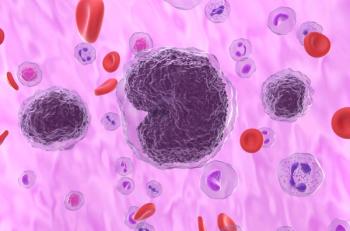
Is Immunotherapy the Key to Developing an HIV Vaccine?
A new immunotherapy approach was found to both expose HIV concealed within CD4+ T cells and kill it, which could potentially lead to an eventual vaccine for the virus.
Researchers have developed an immunotherapy approach that can prevent HIV from staying hidden from the immune system and also destroy it, according to a study in EBioMedicine.
While the method has not yet been tested during clinical trials, the approach could potentially lead to the development of an
“A lot of scientists are trying to develop a cure for HIV, and it’s usually built around the ‘kick and kill’ concept — kick the virus out of hiding and then kill it,” said senior author Robbie Mailliard, PhD, assistant professor of infectious diseases and microbiology at Pitt Public Health,
While ART has been successful in preventing and reducing HIV-associated morbidity and mortality, it does not completely remove the virus from the body. Even during ART, HIV conceals itself and continues to reside within resting memory CD4+ T cells. Developing a safe and effective strategy to induce latency reversal during ART that forces HIV out of hiding and allows it to be targeted for immune elimination remains a substantial barrier to finding a cure.
In the study, researchers focused on cytomegalovirus (CMV), which can stay hidden from the immune system in a similar way to HIV. The virus currently infects more than half of adults and 95% of individuals with HIV. CMV can lead to infections and illnesses but is often suppressed by the immune system.
“The immune system spends a lot of time keeping CMV in check; in some people, 1 out of every 5 T cells are specific to that one virus,” said coauthor Charles Rinaldo, PhD, professor and chair of Pitt Public Health’s Department of Infectious Diseases and Microbiology, in the statement. “That got us thinking — maybe those cells that are specific to fighting CMV also make up a large part of the latent HIV reservoir. So we engineered our immunotherapy to not only target HIV, but to also activate CMV-specific T helper cells.”
The study required a high volume of blood from individuals with HIV controlled by ART. Almost 2 dozen participants from the Pittsburgh site of the Multicenter AIDS Cohort Study, a 30-year study that examined the history of treated and untreated HIV and AIDS in men who have sex with men, volunteered to donate.
Researchers tested the use of antigen-presenting type 1-polarized, monocyte-derived dendritic cells (MDC1), produced from individuals infected with HIV-1 receiving ART, in order to induce HIV-1 latency reversal in autologous CD4+ T cells sheltering replication-competent provirus. They then used the same MDC1 for ex vivo generation of autologous HIV-1 antigen-specific CD8+ cytotoxic T cells (CTL) and tested their effector responses against MDC1-exposed, targeted HIV-1 infected CD4+ T cells.
It was found that MDC1 presentation of either HIV-1 or CMV antigens to CD4+ T cells enabled HIV-1 latency reversal. Antigen-driven MDC1-mediated latency reversal was sharply reduced as CD40L/CD40 signaling pathways were blocked. Another significant finding was that antigen-presenting MDC1 activated the expansion of CTL that could kill the revealed HIV-1 infected targets.
Researchers believe that inclusion of virus-associated major histocompatibility complex class 2 antigens in MDC1-based HIV-1 immunotherapies could both serve as way to unveil antigen-specific CD4+ T cells concealing HIV-1 and support CTL responses that could target the MDC1-exposed HIV-1 cellular reservoir, which could lead to a practical cure strategy.
Researchers are currently in the process of gathering funding to begin clinical trials to test MDC1 immunotherapy in humans.
“Without adding any other drug or therapy, MDC1 were then able to recruit killer T cells to eliminate the virally infected cells. With just MDC1, we achieved both kick and kill — it’s like the Swiss Army knife of immunotherapies. To our knowledge, this is the first study to program dendritic cells to incorporate CMV to get the kick, and also to get the kill,” Mailliard concluded.
Reference
Kristoff J, Palma ML, Garcia-Bates TM, et al. Type 1-programmed dendritic cells drive antigen-specific latency reversal and immune elimination of persistent HIV-1 [published online April 2, 2019]. EBioMedicine. doi: 10.1016/j.ebiom.2019.03.077.
Newsletter
Stay ahead of policy, cost, and value—subscribe to AJMC for expert insights at the intersection of clinical care and health economics.













































